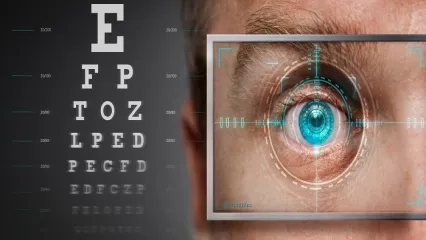Alo Yeditepe
Alo Yeditepe
Watch Out Blue Light Emitted By Devices For The Health of Your Eyes
Consuming more tech makes eyes feel dry, gritty, tired, or strained, resulting in interfering humans’ circadian rhythms. As we started to consume more technology, we have been exposed to blue light that has been emitted by smartphones, tablets and other technological devices. So our eyes are getting more sensitive due to blue light’s damages. “Spending too much time looking at a screen can keep people from blinking as often as they should and from focusing on things at different locations. This can make the eyes feel dry, gritty, tired, or strained. The simple solution is to look at least 20 feet away, for 20 seconds, every 20 minutes,” said Prof. Dr. Sinan Tatlıpınar, Head of Ophthalmology Department at Yeditepe University Hospitals.
What is blue light emitted by smartphones and tablets? What are the characteristics of it?
First, sunlight is the main source of blue light. Sunlight contains red, orange, yellow, green, and blue light rays, and many tones of each of these colors, depending on the energy and wavelength of the individual rays. In the light spectrum, blue light is as known as “high energy visible light (HEV light)”, and blue light defined as visible light ranging from 380 to 500 nm. Smartphones, tablets, and other technological devices emit some amounts of blue light. The amount of blue light these devices emit is only a fraction of that emitted by the sun.
Why is blue light harmful?
Because blue light can interfere with humans’ circadian rhythms, making it harder to fall asleep. It can be a good idea to limit screen time before bed. Or to filter out blue light from screens before bedtime.
Spending too much time looking at a screen can keep people from blinking as often as they should and from focusing on things at different locations. This can make the eyes feel dry, gritty, tired, or strained. The simple solution is to look at least 20 feet away, for 20 seconds, every 20 minutes.
While there is no solid scientific evidence that blue light from digital devices causes damage to your eyes, there is growing concern that blue light may have long-term effects on our health. Because rays on the blue end of the spectrum have shorter wavelengths and more energy, so they may be toxic.
How many minutes should we look at smartphones and tablets?
Less is healthier! We should limit our screen time in daily basis. We can follow the rule as I have mentioned before: Look at least 20 feet away, for 20 seconds, every 20 minutes. On the other hand, because of our job, and our needs we cannot far away from our smartphones, tablets, and laptops. We should provide the balance between screen time and rest time for our eyes.
Besides sleeping disorder and depression, what type of diseases blue light might cause?
There has been not showed any evidence-based medical research that blue light from digital devices might cause besides than sleeping disorder so far. On the other hand, blue light from sun may increase the risk of certain eye disorders like cataract and macular degeneration.
Is blue light also harmful for children? What do you recommend to families in using smartphones and tablets?
Blue light can be harmful for children because of its effect to sleep cycle. Please, limit screen time for your children as possible as you can. For example, 40 minutes with tablets per day. We do not recommend children to use smartphones for entertainment because small screen and less distance between device and the eyes are more harmful for visual health.
There are some researches that link increased screen time in young children to other health issues, such as:
- Attention-related disorders
- Obesity
- Myopia (nearsightedness)
Also, the American Academy of Pediatrics recommends:
- No screen time for kids until they are 2 years old (except for video chatting with apps like FaceTime or Skype)
- No more than one hour of screen time for children ages 2 to 5. This allows more time for other activities emphasizing body movement and interactive play that are fundamental to a child’s physical and intellectual development.
Press Coverage: turkishtechnews.com
About
Faculty and Year of Graduation:
Hacettepe, 1996
”
See Also
- What is Cataract? Symptoms and Treatment
- Pollen is Now Seen Outside of Seasonal Changes
- Pay Attention to the Flashing Light in the Eye!
- Medication Administration to the Eye
- Thyroid-Related Eye Diseases
- Glaucoma
- If You Have Diabetes, Consult An Ophthalmologist At Least Once A Year.
- It was Told that She could Lose Both Eyes, but She Recovered with an Operation
- The Danger to the World: MYOPIA
- Eyelid Diseases
- Are Flies Flying Before Your Eyes?
- 7 Tips to Protect Your Eye Health
- Allergic Conjunctivitis (Eye Allergy)
Alo Yeditepe




